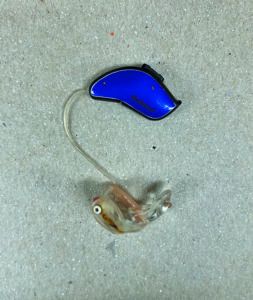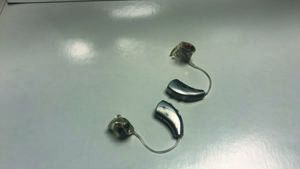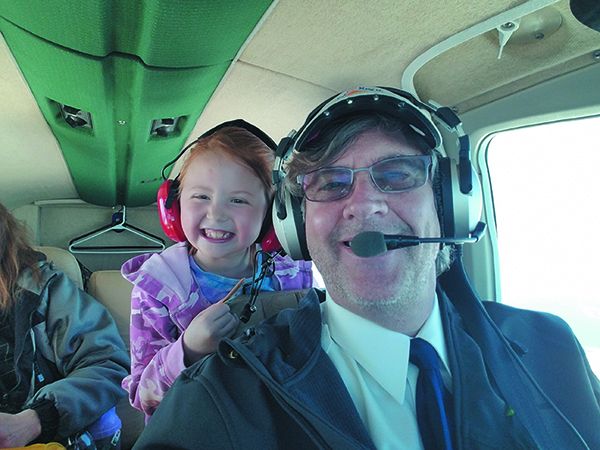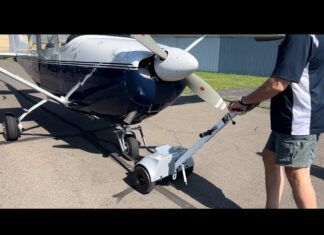Old pilots tend to be a deaf bunch,” as one AME so bluntly called it. He would know. For me, the tough reality is sinking in that I too may someday join the ranks of the hearing impaired—wrong in expecting that growing old would take longer.
So when reader and hearing-aid candidate Thomas Folk reached out and asked if hearing aids might work with typical avionics and ANR headsets, we asked for feedback and experience from others, as we’ll as from some industry audio experts on why it usually doesn’t work.
In this report we’ll concentrate on the practicalities of flying with hearing aids as reported by those who have them. We’ll look at hearing deficiencies and how they affect your chances of getting a medical certificate as part of a separate aeromedical certification article in a future issue of Aviation Consumer.
SAY AGAIN, OVER
First, the key is to do everything you can to avoid hearing aids in the first place. A musician and motorcyclist who has been around airplane noise for a long time, like many I’m guilty of not adequately protecting my ears. A real hearing analysis is worth the effort because you may be surprised at the results. Aviator Dr. Brent Blue had good advice for all of us.
“Hearing loss due to loud noise is cumulative, and it’s critical to use hearing protection all the time when around loud noise,” he said. Obvious, but think about it—do you wear hearing protection when hanging around the hangar and when operating the engine-powered tug?
If it’s too late, and your medical certificate requires the use of hearing aids, it’s tricky, and it’s trial and error if you fly with headsets—which most all of us do. As I’ve found, the majority of users end up removing them because they simply aren’t compatible with their noise-canceling headset—including well-proven flagship Bose and Lightspeed models to name two.
The problem is a deafening squeal (and it is deafening) when the ANR speakers come within range of the hearing aids.
TRIALS AND ERRORS
“I never wear my hearing aids with my Bose A20 headset because I get too much feedback, so I just turn up the radios and intercom,” said one pilot who flies turboprops, pistons and gliders. As she put it, hearing aids are a good invention, but there’s nothing better than hearing with a brain/ear connection. But compensating by cranking the volume up means your flying companions with normal hearing will get blasted. That’s why an intercom with dedicated pilot and copilot volume controls is imperative.
“I have moderate hearing loss (maybe more than moderate if you asked my wife) and wear a pair of recent-generation, Bluetooth-enabled hearing aids made by Oticon. They work quite we’ll for me in normal daily conversations, listening to TV, etc. However, I have to either remove them or turn them off when I am flying with my Bose noise-canceling headset because of a buzzing feedback. I have no problem with radio communications with just the headset, and I’m even able to enjoy music in the cockpit,” Bob Crooks reports. Plenty of other pilots have similar stories.
Since so many hearing aid wearers also wear Bose headsets, we reached out to Matt Ruwe, the senior product manager at the Bose aviation division, for an explanation. He’s explained it all before.
According to Ruwe, feedback can occur when the amplified sound escapes the ear and is picked up by the device’s microphone. This often sounds like a whistle or “squeal” and is the same type of feedback you’ve probably heard when a microphone is too near the loudspeaker of a public address system. In this case, by placing an object near the hearing aid (it could be as simple as a cupped hand), more of that amplified sound is reflected back to the microphone, making the device more likely to whistle.
Rue explained that a headset that fully encloses the hearing aid is an extreme situation, trapping the amplified sound in the same cavity as the microphone, making the hearing aid much more prone to feedback. “The good news is that many modern hearing aids suppress feedback with digital signal processing; however, wearing a headset around the hearing aid is often too great a challenge and can result in sustained feedback.” Not every wearer will have similar results, which is why you simply need to try it for yourself. Rue stressed that it’s important to know the details of a specific user’s hearing loss, and consult with an audiologist. And as we learned from our polling, many users enjoy better hearing thanks to good headsets—without the hearing aids in.
“Some have found that when combined with excellent headset performance, turning down or removing a hearing aid still allows for sufficient intelligibility of the critical communication. However, this is very dependent on the user and the amount of hearing loss they suffer from, and could reduce intelligibility of other sounds needed to safely operate the aircraft,” Rue told us. He’s right. There’s more to it than hearing the radios. There’s engine noise, airframe noise and audio alerts like landing gear and stall warning horns—all sounds that might be external to the headset.
The thought that hearing loss simply makes all sounds quieter would dictate that one could address this by simply turning down (or off completely) the hearing aid and turning up the volume of the headset. There are at least two reasons why this might be a workable solution for some, but not for the majority.
Bose’s Rue reminds us that hearing loss is often frequency-dependent (i.e., greater at some frequencies than others), as is compensating for hearing loss (greater hearing loss requires more compensation). Second, hearing loss is also typically input level-dependent—soft sounds require more compensation than loud sounds.
“Concerning headsets and audio panels, their controls are typically designed to make all sounds (soft/loud, low/high frequency) louder by the same amount for a given volume setting. What this means for a person with hearing loss who has elected to remove the device is that any volume setting selected on the audio panel is likely only appropriate for some of the sounds at some frequencies,” says Rue.
In other words, given the dynamic nature of sounds that we typically want to hear, a particular volume setting is unlikely to be delivering audio that is appropriate all of the time. Again, you might hear the radios and intercom, but not critical sounds outside the headset.
TELECOIL AND MOLDS

Several pilots said they get reasonably good performance from models with the receiver placed inside the ear canal, rather than with dome-style models more common with mild hearing loss. Telecoil models (think antenna for your ears) have a small wire coiled around a rod that’s built inside the hearing aid.
The coil works as a small receiver that picks up signals from a loop system acting as an electromagnetic field. Active telecoil hearing aids convert the electromagnetic field into a sound signal, and only the signal from loop’s microphone is amplified. That means background noise is shut out.
“My ReSound telecoil models are programmed with a real-ear measurement to get the best possible speech understanding for my hearing loss, plus I have custom ear molds. I use a Lightspeed Zulu 3 ANR headset and regularly update the ear seals. In the past, feedback has been a significant issue when wearing a headset over hearing aids. But I found that my current ones do a very good job at canceling feedback noise.
“I fly with my hearing aids in telecoil-only mode and outside sound is blocked. The speech I need to hear comes directly into the headset and travels a very short distance into my hearing aid. I hear with remarkable clarity—better than in many everyday environments,” Sherry Sisson said of her current set she wears in her Cessna. But they aren’t without some issues.
Sisson reports that if the Lightspeed ANR headset’s battery dies, hearing becomes a real issue. If the hearing aid battery dies, she loses her ability to communicate.
On long trips she’s we’ll equipped with spare headset batteries—and a spare set of hearing aids. Of course, the telecoil design hinders the ability to hear sounds in the cockpit.
Gordon Evans—another Lightspeed ANR headset user—reports good performance from his top-of-the-line (from 2017) Widex U4-series hearing aids. At $4600, they were a big investment. “When adjusted properly with the plane’s intercom system, they work just fine,” he said.
He’s paying a bigger price from years of noise exposure to jet engines and gunfire, and his hearing initially failed in the high-frequency range above 2000 Hz. He got serious about hearing protection 25 years ago, but the damage was already done.
Peter Blauner has success flying with the Lyric ear canal model. They work great for him in the cockpit and for his equine veterinarian work.
“You wear them 24 hours a day and can turn them off with a clever magnetic switch for a peaceful, quiet night’s sleep and you won’t hear the dogs scratching and snoring!” he reports.
Blauner chose the Lyrics for vanity (completely undetectable) and compatibility with a stethoscope. That might make them compatible with in-ear headsets, too.

I’ve been flying for 40 years (20 with hearing aids), logging more than 3000 hours with them. I have been through multiple types and brands, and I fly a Rockwell Commander single. There are several good providers to include Phonak and Siemens, to name two, and a few sketchy ones that are famous for bait and switch and selling to older folks at inflated prices. You won’t get what you need by going cheap. I have settled on Starkey, a U.S. manufacturer based in Minnesota. My latest set (wearing them for 18 months) is a near miracle—LIVIO Ai RIC model with Bluetooth. I now hear perfectly on phone calls, with the signal piped directly from the phone into my ear via Bluetooth. But let’s talk flying.
Using a flagship Lightspeed headset, I just take the aids out for flights more than an hour. The sound is so good with the Lightspeeds that I just increase the volume and I’m good to go. That increases comfort on mid- to-long flights. I could not do that as we’ll with my previous Bose model. But if I am flying an hour or less, or in high-traffic areas flying IFR and working busy approach frequencies, I leave the hearing aids in. My LIVIO models offer three volume increases (up or down) from what you set as “normal” by touching a button on either hearing aid or using the app on the iPhone. When I fly with them in, I dial them down to the lowest setting and adjust the volume on the panel.
The LIVIO models come with several standard hearing programs and the option to create your own. These can be noisy room, large crowd, music, etc. I do fine on the standard program 95 percent of the time, because they adjust automatically. But I did create a custom program for flying with the headset by lowering the low frequency, increasing the mid and high ranges a bit and actually lowering the loud noise suppression because the Lightspeeds take care of that. Truth be told, however, just the standard program with volume lowered works nearly as well, if you don’t want to mess with all that.
No matter the brand, you need CIC (completely in the canal) or the RIC (receiver in the canal) models. The over-the-ear models (OTE) are most often built with microphones on the external casing that holds the electronics behind the ear. Since the receiver is in that unit, most will squeal with headsets. My LIVIO model is OTE with RIC, with a thin, almost invisible wire strung down to the small receiver, which sits right at the opening of the ear canal. Ideal.OTE models last longer and require less maintenance. The RIC eliminates the relatively fat sound tube that runs to the canal in traditional models, and has superior sound.
CITE (completely in the ear) models are larger, more reliable and still fit within the ear. There’s a lot more room than the tiny CIC (completely in the canal) models, which have little room for the batteries and electronics. I find CIC to be too small and tight, require more maintenance and I tend to develop ear itching and even infections. CITE models have more room, but are much more visible with a plastic block hanging off the ear, but you can order them in many colors. There’s no fat tube and the mic is on the receiver by the ear canal producing the most natural sound. With these units, I’m sold.
—Scott Sedam
PROS AND CONS
The takeaway for flying with hearing aids is to simply try it. From the dozens of pilots we polled, there was no concrete evidence that one model or design is perfect, although telecoil and RIC models seem to be more favorable, but with limitations that may be a deal breaker if not a safety issue since you may not hear external sounds you need to.
We’ll conclude with words from Brian Peck, a doc who has been wearing hearing aids for 15 years (and flying for 36), who summed up the pros and cons of wearing hearing aids with headsets. He flies a Piper Saratoga and a J3 Cub.
• It’s convenient not to have to remove and replace your hearing aids before and after shutting down.
• There’s less chance of misplacing them, or worrying about where to store the pouch.
• You can retain the hearing-aid-based Bluetooth features for communicating with your smartphone.
• It’s possible (but not definite) that your acuity will be improved when communicating with ATC.
• There’s possible deafening feedback that may occur inconsistently at varying critical phases of flight.
• Hearing aids can get inadvertently pulled out when removing the headset, and invariably fall between aircraft seats and find their way to unreachable and unthought-of destinations that require a flashlight and a contortionist to locate.
• The engine noises with which you have become lovingly familiar take on new and previously unheard (literally) characteristics, just like that sit-up-straight-in-the-seat imaginary roughness when flying over water or mountains. These sounds tend to make the owner/pilot nervous.
• There’s often the discomfort of the hearing aids resting behind your ears and being constantly pushed into your head by the headset.
• Passengers and line workers (like most people with normal hearing) simply don’t get it, and always start talking to the pilot before he has replaced the hearing aids. We get tired of asking “what” over and over. Believe me when I tell you that hearing loss is much tougher on the victim than on his or her clueless, but sometimes irritated or impatient, acquaintances.


